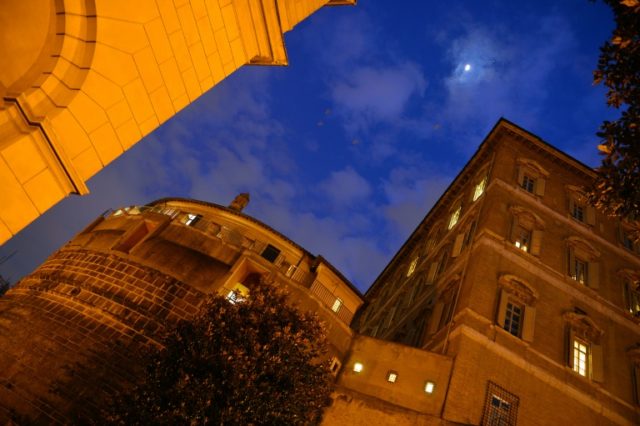Vatican City (AFP) – A clean-up of the Vatican bank has been completed, with the final tally of suspect accounts that had to be closed nearing 5,000, the Holy See’s financial watchdog said Thursday.
Unveiling the 2015 annual report of the Financial Information Authority (FIA), its director Tommaso Di Ruzza said a three-year examination of the scandal-hit Institute of Religious Works (IOR), as the bank is officially known, was now finished.
“We took a very strict line towards any accounts that were not in compliance (with Vatican legislation) and now finally the process of closures is done,” Di Ruzzo told a Vatican press conference. “A total of 4,935 were closed and that is a final figure.”
The FIA was established in 2010 by now-retired Pope Benedict XVI to bring the Vatican’s financial institutions into line with international standards designed to reduce the risk of accounts being used for nefarious purposes.
IOR account holders in the past have included mafia figures and it became notorious around the world because of a 1980s scandal centred on the death of banker Roberto Calvi, whose corpse was discovered hanging under Blackfriars bridge in London.
At the same time as it established the FIA, the Vatican signed up for external evaluation by Moneyval, a European body that combats money laundering and the financing of terrorism.
Moneyval reported in December that the Vatican had addressed most of its structural weaknesses.
But it also questioned why no indictments or prosecutions had ensued as a result of the evidence of wrongdoing gathered and handed to prosecutors.
In its latest report, FIA said it had been alerted to 544 suspicious transactions last year, mainly involving possible tax evasion.
That was more than three times the number registered in 2014 (147) but FIA President Rene Brulhart said the spike was likely as a result of more zealous monitoring.
– Insider trading –
“In a process like this you always set a low threshold for reporting to create awareness. I hope in 2016 the figure will be back to normal. Of course ideally we would like a zero figure but that is not realistic.”
The 544 suspect transactions resulted in 17 reports being handed over to Vatican prosecutors, including at least one which included evidence of insider training on a major stock market.
Prosecutors believe Calvi’s 1982 death was linked to money laundering via the Vatican bank.
It emerged nearly 30 years later that the Vatican still had no idea of the identity of thousands of IOR account holders and that some accounts were held by people with no apparent connection to the Church or its charitable works.
Others contained secret slush funds used for off-the-books spending by Vatican departments, according to books published recently by two Italian journalists, who are now on trial for conspiring in the leak of classified documents.
Vatican efforts to put its finances in order initially accelerated after Pope Francis’s election in 2013. But an economic reform commission he established has since been disbanded and three of its members are currently on trial with the journalists.
Moves to have all the Vatican books externally audited have also been a start-stop affair.
PricewaterhouseCoopers (PwC) were appointed in December to do the job by powerful Australian cardinal George Pell, the head of the Vatican’s economic secretariat.
But PwC’s $3-million contract was suspended last week on the orders of a rival department, the secretariat of state, leaving Pell “a little surprised.”

COMMENTS
Please let us know if you're having issues with commenting.